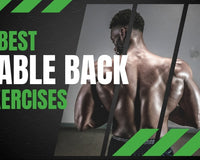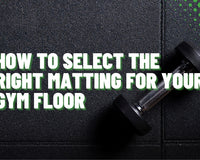Dumbbell pullovers are a great exercise to target your chest and back. Although, it is a hot topic of debate whether it is a chest or lat exercise. And it is easy to see why people get confused.
But if performed with the correct form with straight elbows, then dumbbell pullovers target your chest more. However, small adjustments to the elbow's position can turn this into a great back exercise.
This makes dumbbell pullovers a versatile exercise and popular choice no matter if you're a bodybuilder, powerlifter, strongman, or just someone who wants to build a bit of muscle.
So let us get to it and show you everything you need to know about dumbbell pullovers to maximise your training results.
What is a Dumbbell Pullover?

A dumbbell pullover is a very simple exercise where you lay down on a flat bench, with a single dumbbell.
You hold the dumbbell with both hands so that your palms are facing upwards, you extend your hands up above your body, and then slowly lower them back down until they are ear-level, or even better, behind your head.
You hold this position for a second or two, and then lift the dumbbell back up to the starting position so that it is hanging over your chest or face.
Dumbbell Pullover Benefits
Something you might be wondering is why dumbbell pullovers are so popular. Well, they have several benefits, primarily to help target your chest muscles.
Exactly which muscles this exercise targets the most depends on your positioning, particularly the position of your upper arm bone and the direction in which you point your elbows. Depending on exactly how your arms are placed, it may also work out your back.
So, besides strengthening your chest and back muscles, there are also other benefits, such as mobility.
This exercise involves moving your arm back and forth using the shoulder joint, and this helps to keep your shoulder mobile and limber.
In addition to improved strength and mobility, dumbbell pullovers only require a single dumbbell which makes them an easily accessible exercise.
You won't have to worry about waiting for a machine and chances are you will be able to find a dumbbell the right weight for you.
Dumbbells also come in many different weights and sizes, which therefore allows you to accommodate this exercise to your specific goals, fitness level, and needs.
For instance, if you use a lower-weight dumbbell and do more reps, you're going to train your muscular endurance, whereas if you do a few reps with a high weight, you'll build muscular strength and size.
Muscles Worked by a Dumbbell Pullover
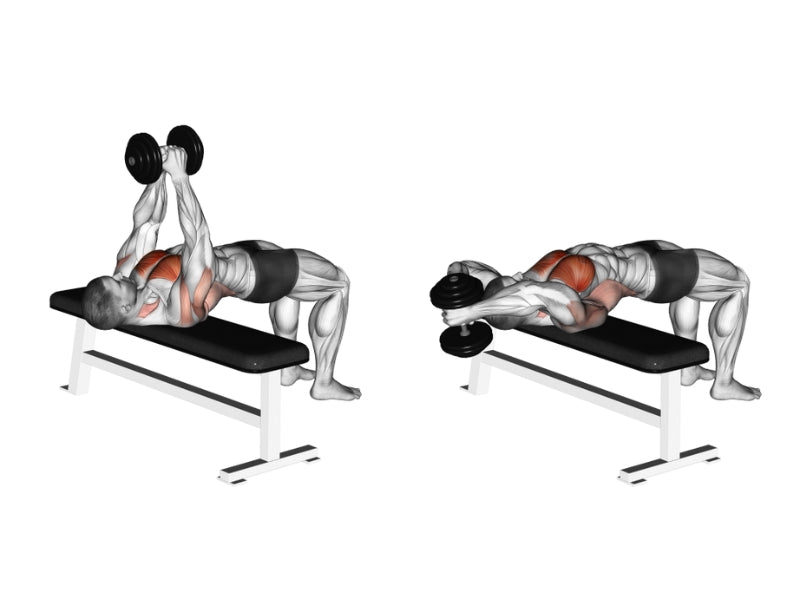
To be clear, the dumbbell pullover works out your pec or chest muscles above all else if your elbows are straight. However, those aren't the only muscles exercised by the dumbbell pullover.
In addition to your chest muscles, this exercise also targets your lats or latissimus dorsi, your triceps muscles, your posterior deltoids, your teres major, and depending on how you are holding the dumbbell, even your wrist flexors.
If you focus on properly laying on the bench, keep your breathing in check, and you engage your abdominal muscles, then you can even get a good core workout out of the dumbbell pullover.
How to Do a Dumbbell Pullover
Now that we know what a dumbbell pullover is and what benefits it has for you, let's go through a step-by-step guide on exactly how to do one.
- Start by first choosing the right dumbbell for your experience level and strength. Although some might say that a good starting weight for this exercise is around 30% of your body weight, if you're a beginner, you can go down a little bit. However, there is a bit of trial and error involved here, and you'll have to figure this out for yourself. For instance, if you can't even get through five repetitions, chances are the dumbbell is too heavy, but if you easily get to 15, it's probably too light.
- Start by sitting at the end of the bench and holding the dumbbell in both of your hands.
- Make sure to hold the dumbbell firmly in both of your hands while sitting near the end of the bench. Recline backwards on the bench and bring the dumbbell down with you, until you're lying flat and your face is looking straight up.
- Make sure to keep your feet flat on the ground and your head and upper back supported by the bench, hold the end of the dumbbell with both of your hands and lift your arms straight up so that the weight is hanging above your chest.
- To maintain proper form, you want to keep your elbows pointed outwards to ensure that your upper arm bone is slightly inwardly rotated, which helps to increase the amount of pressure put on your chest.
- When laying on the bench, don't flatten it or hyperextend it. You want your lower back and your pelvis to be in a neutral position during this exercise.
- From the starting position, with the dumbbell hanging above your chest and your arms extended straight upwards, take a big breath in and slowly lower your arms back down behind your head.
- Your arms should end up at ear level, or if you really want a good stretch, extend your arms down below your head as far as you can. While doing this, your arms should stay relatively straight but don't lock them out.
- If possible, hold the position for one or two seconds, then slowly push through and return to the starting position while keeping your arms straight and your elbows pointed outwards.
- Aim for at least 10 repetitions when doing this exercise for two or three sets.
If you want to focus more on your lats, then you simply keep your elbows flared out slightly. Then when you lower the weight behind you head try to keep the dumbbell close to your head with your elbows flarred to feel the stretch in your lats.
6 Dumbbell Pullover Variations to Try
Depending on exactly what your goals are, as well as what equipment you have at your disposal, there are some good dumbbell pullover variations that you can try.
Laying Down on the Floor
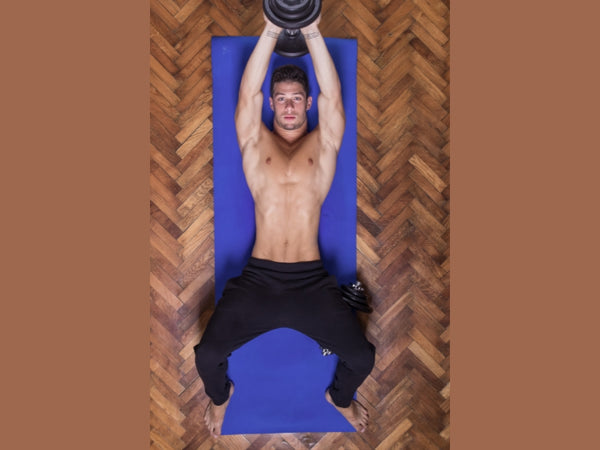
If you have limited mobility or a limited range of motion, such as due to a shoulder injury, it might be beneficial for you to lie on the ground while you do this exercise.
It's also a good idea to lie on the ground simply if you don't have a bench. If you're a beginner, the floor also gives you a wide base of support, therefore keeping you stable.
Engage Your Core and Glutes More
If you want this exercise to also target your core muscles and your glutes, this is certainly possible.
To do this, place a dumbbell on one bench so that you can easily reach it, and then lay perpendicular to the same bench. Keep your upper back, shoulders, neck, and head supported by the bench.
You can now pick up the dumbbell in your hands, press your feet firmly into the floor, and then lift your hips up like you're doing a pelvic thrust so that your hips are aligned with your shoulders and knees.
Make sure that your knees are bent and aligned with your feet. Do the exercise as you normally would while also holding this pelvis thrust.
Limit Your Range of Motion and Focus on Form
Doing exercises like the dumbbell pullover is all about maintaining good form, and to do that, you need to avoid overarching your lower back on the bench.
Therefore, it's best to keep your arms straight and to only lower them overhead to the point where you can keep your pelvis, ribs, and spine perfectly still.
If you're moving your abdomen too much while doing this exercise, it means you aren't doing it right.
Using a Barbell
If you want to do this exercise, but a dumbbell just isn't heavy enough, or is too awkward for you to hold, using a barbell is another good option.
That being said, if you are doing pullovers with a barbell, you want to have a spotter because it likely also means that you're going heavy.
Using a Medicine Ball
If you don't have a dumbbell to use, or you need to work on your form, using a medicine ball is a good idea. If you hold a medicine ball, it forces you to face your palms inwards, which helps to support the proper position of the upper arms and elbows during this exercise. Some people find this variation to be more comfortable.
Sit on a Stability Ball
Finally, if you're looking to target your core more, laying on a stability ball instead of a bench will certainly accomplish that.
Tips for Doing Dumbbell Pullovers the Right Way
Let's go over some quick tips on doing a dumbbell pullover the right way.
- Remember that if your elbows are angled inwards, it will target your lats more, whereas if your elbows are angled outwards, the exercise will target your chest muscles more.
- Make sure to breathe very deeply when your arms go back over your head.
- When you bring your arms overhead, if you have to excessively arch your back, it means that you have a limited range of motion. Above all else focus on form, and if you're arching your back, reduce the range of motion.
Final Thoughts on Dumbbell Pullovers
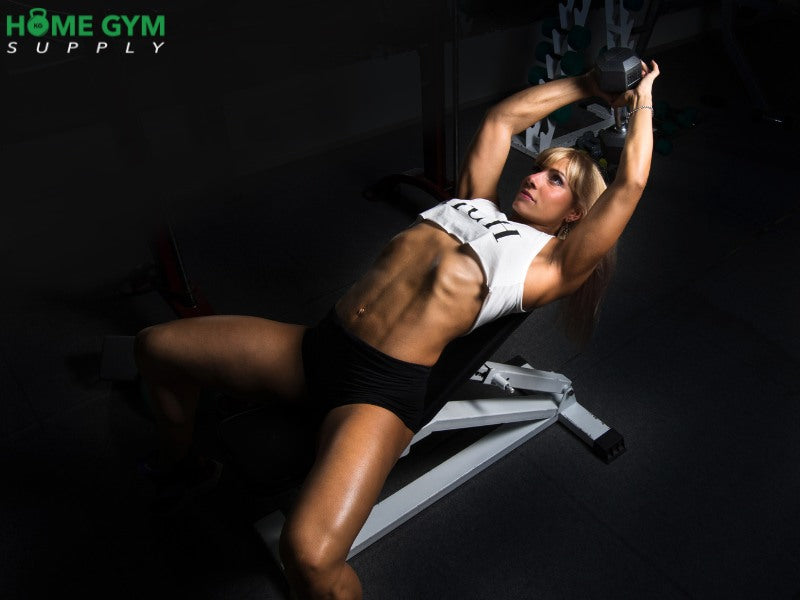
The bottom line is that dumbbell pullovers are a fantastic chest and lats exercise for you to do, something that you can do with nothing but a dumbbell and a bench, or if you're at home, even a dumbbell alone will suffice.



